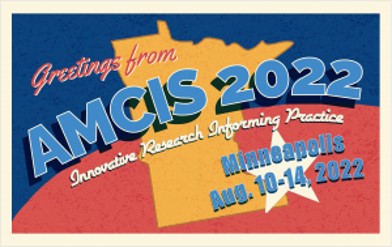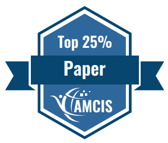SIG - Adoption and Diffusion of IT
Loading...
Paper Type
Complete
Paper Number
1504
Description
From autonomous vehicles to smart home assistants and telemedicine, artificial intelligence (AI) enabled technologies are increasingly available in the market. Consumers are saddled between the benefits and the risks of these new technologies, yet research has seldom accounted for both facilitators and inhibitors of AI-enabled technology adoption. We introduce a theoretical model that includes both facilitators and inhibitors of AI-enabled technologies, which we test using structural equation modeling with a cross sectional survey of U.S. consumers across three AI categories: autonomous vehicles for robotic AI, smart home assistants for virtual AI, and telemedicine for embedded AI. We also include in the model the role of brand trust. We find that perceived uncertainty, loss of control, and privacy risk inhibit intention to use AI-enabled technologies by reducing perceptions of convenience, customization, and efficiency, so facilitators mediate the relationship between inhibitors and intention to use. We also find that brand trust contributes to intention to use by positively affecting facilitators and negatively affecting inhibitors. Finally, we ran the classic Technology Acceptance Model and found that our proposed model is a better fit to predict intention to use AI-enabled technologies.
Recommended Citation
Dagliyan, George; Granados, Nelson F.; and Russell, Cristel A., "Adopting AI-Enabled Technology: Taking the Bad with the Good" (2022). AMCIS 2022 Proceedings. 16.
https://aisel.aisnet.org/amcis2022/sig_adit/sig_adit/16
Adopting AI-Enabled Technology: Taking the Bad with the Good
From autonomous vehicles to smart home assistants and telemedicine, artificial intelligence (AI) enabled technologies are increasingly available in the market. Consumers are saddled between the benefits and the risks of these new technologies, yet research has seldom accounted for both facilitators and inhibitors of AI-enabled technology adoption. We introduce a theoretical model that includes both facilitators and inhibitors of AI-enabled technologies, which we test using structural equation modeling with a cross sectional survey of U.S. consumers across three AI categories: autonomous vehicles for robotic AI, smart home assistants for virtual AI, and telemedicine for embedded AI. We also include in the model the role of brand trust. We find that perceived uncertainty, loss of control, and privacy risk inhibit intention to use AI-enabled technologies by reducing perceptions of convenience, customization, and efficiency, so facilitators mediate the relationship between inhibitors and intention to use. We also find that brand trust contributes to intention to use by positively affecting facilitators and negatively affecting inhibitors. Finally, we ran the classic Technology Acceptance Model and found that our proposed model is a better fit to predict intention to use AI-enabled technologies.
When commenting on articles, please be friendly, welcoming, respectful and abide by the AIS eLibrary Discussion Thread Code of Conduct posted here.




Comments
SIG ADIT